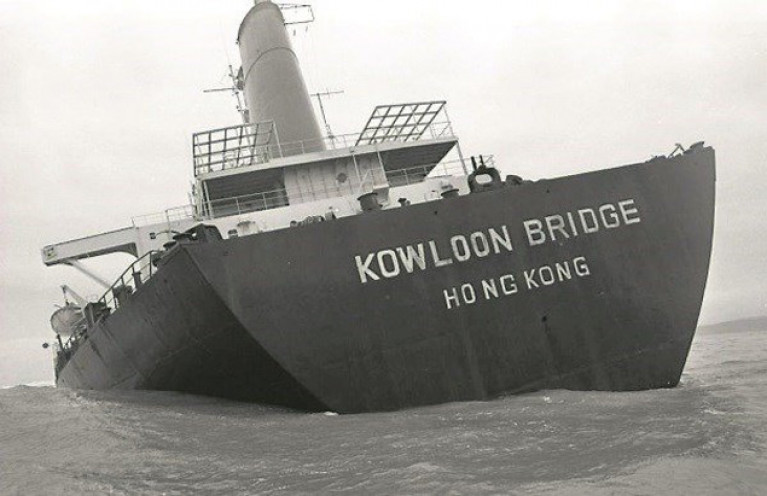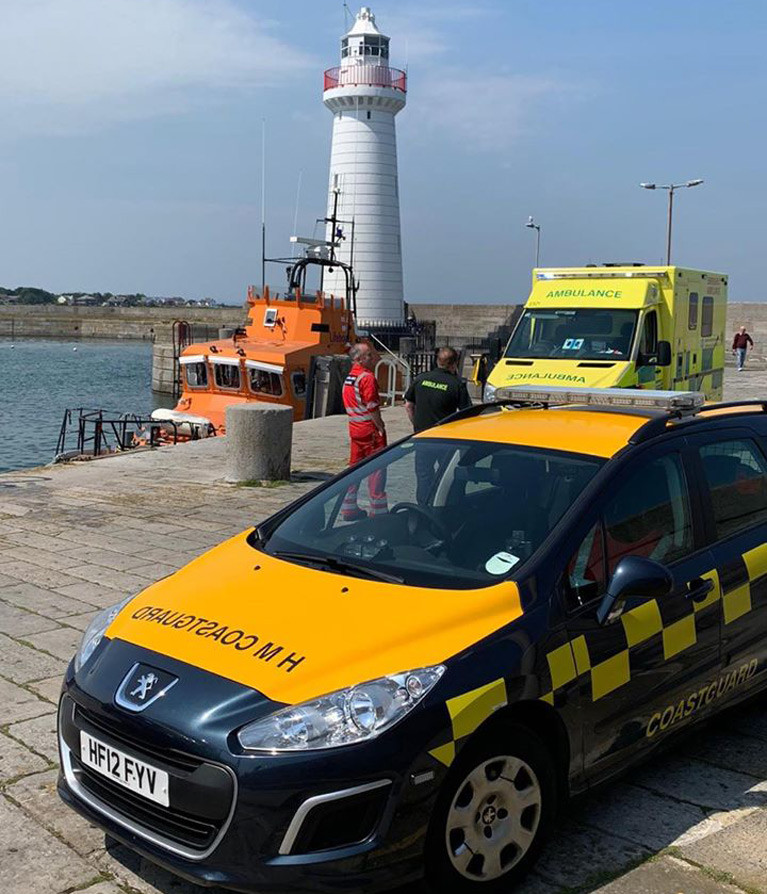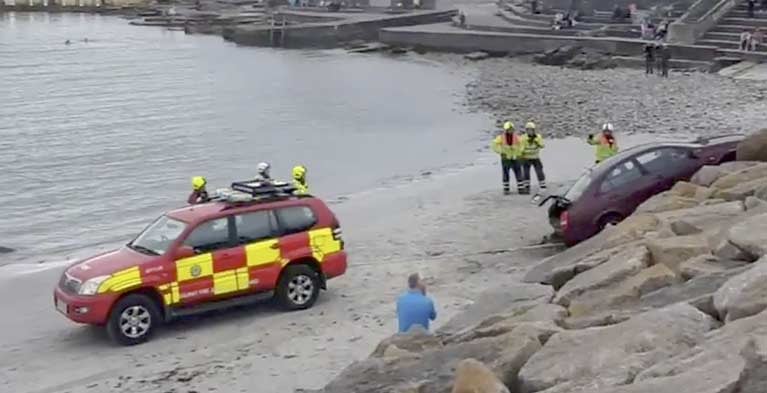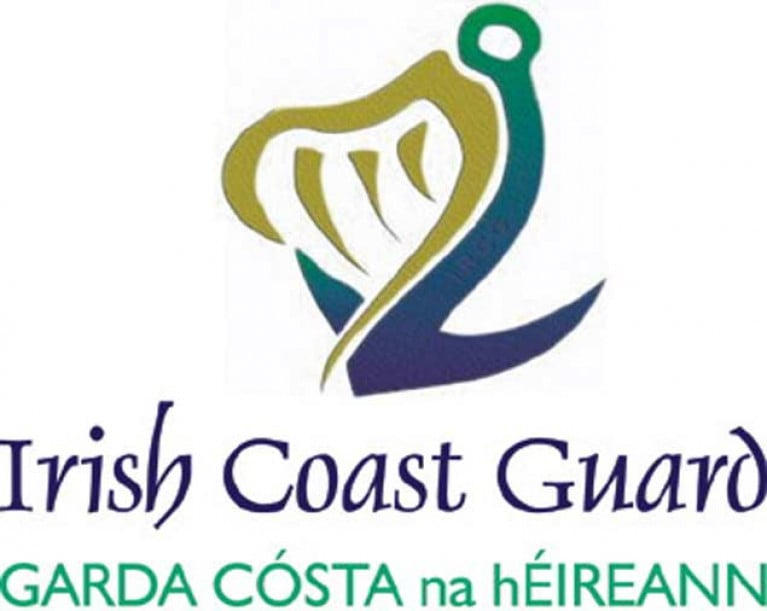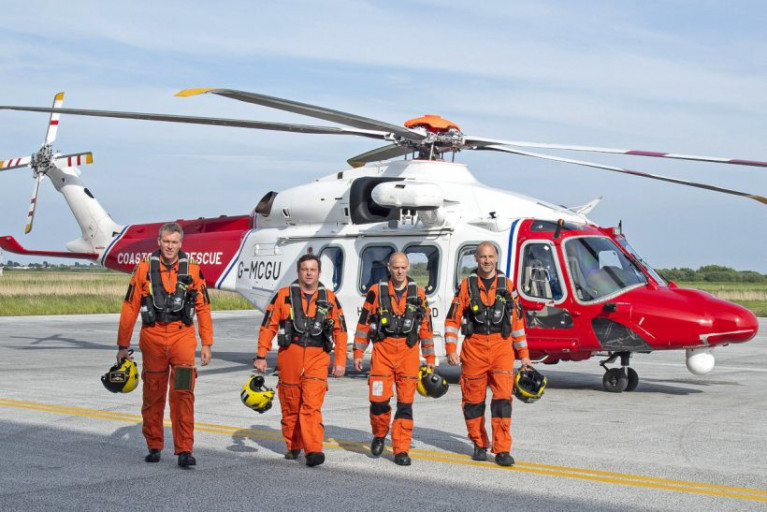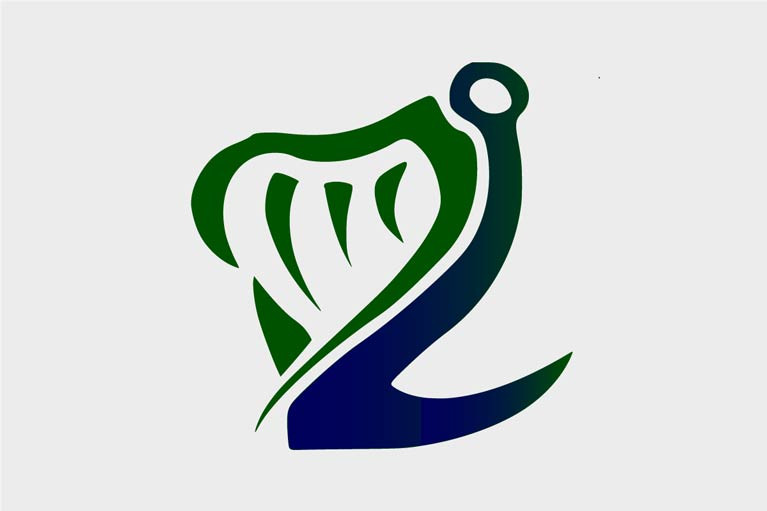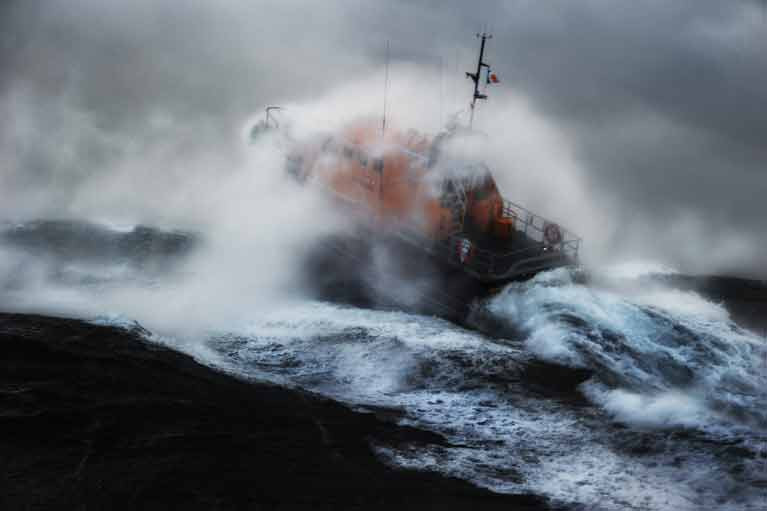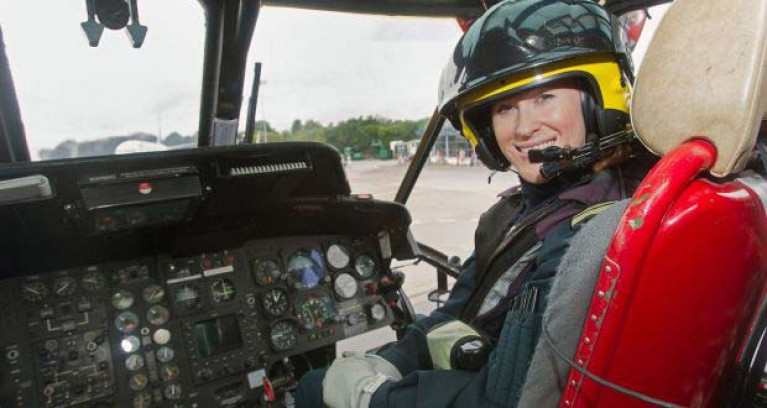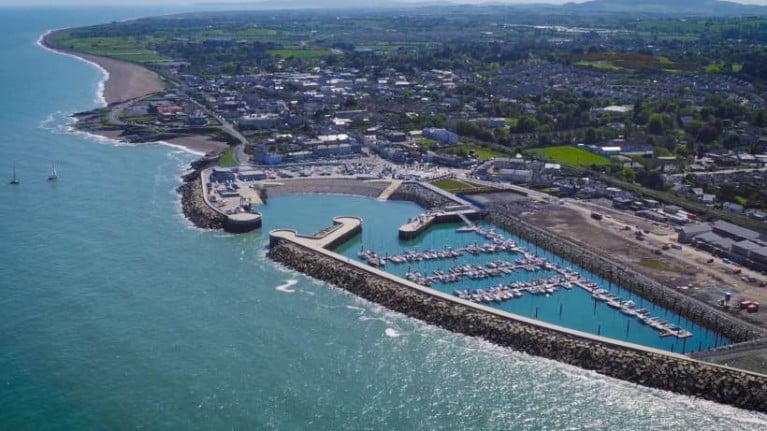Displaying items by tag: Coastguard
Ireland Gets Maritime Oil Pollution Plan - Almost 34 Years After Kowloon Bridge Sinking
Irish Coast Guard deputy director Gerard O’Flynn has hailed as a “milestone” the publication of the State’s framework for handling major maritime pollution incidents.
The plan released by the outgoing government last Friday (June 26) fulfils long-awaited commitments made after the grounding of the Kowloon Bridge off the west Cork coast almost 34 years ago.
Devastating damage was caused to wildlife and the south-west coast’s marine environment when the 900 ft super bulk carrier with a cargo of iron ore ran aground in a gale on November 22nd,1986, broke into three pieces and sank off Toe Head.
At that stage the 27 crew had already been airlifted off the ship, having reported damage to its steering gear.
There was no public inquiry, and Cork County Council had to bear the full clean up of the cost of 0.5 million
The Sea Pollution Act 1991 makes provision for the prevention of pollution of the sea by oil and other substances, but Ireland is obliged to have a national contingency plan as a signatory to the International Convention on Oil Pollution Preparedness, Response and Co-operative Convention.
Mr O’Flynn said the new plan is a “very important milestone”, which “sets out a framework for interactions between stakeholders” in a major pollution incident.
These stakeholders range from the Government’s transport department to the Irish Coast Guard – responsible for both search and rescue and pollution response – and shipping companies, he said.
“We have a national search and rescue plan, and this new pollution contingency plan is another landmark,” he said.
The new national search and rescue plan was published by former transport minister Shane Ross in July 2019.
He was acting on recommendations in a number of reports – including the Air Accident Investigation Unit’s interim statement on the Rescue 116 helicopter crash of March 2017 which claimed the lives of Irish Coast Guard aircrew Dara Fitzpatrick, Mark Duffy, Paul Ormsby and Ciarán Smith, and the Marine Casualty Investigation Board’s report into the death of Irish Coast Guard Doolin volunteer Caitriona Lucas off the Clare coast in September 2016.
The maritime oil and hazardous and noxious substances (HNS) plan sets out a framework for pollution originating from ships, harbours, offshore units or oil/HNS handling facilities and land-based sources.
It covers waters in the Irish Exclusive Economic Zone (EEZ) and addresses Ireland’s obligations under international convention.
It also provides for requesting assistance from other countries through bilateral and multi-lateral arrangements.
Bangor Coastguard's Busy Weekend
The rescue services were so busy over the weekend that they have related several incidents together.
A jetskier needed medical assistance after coming off his jetski. Donaghadee Lifeboat brought the casualty from Millisle into Donaghadee harbour and was met by Northern Ireland Air Ambulance, HART Paramedics, NIAS Ambulance and Bangor CRT. The team thanked the Kayakers who went to his aid.
Bangor was the scene when two girls were washed out to sea on paddleboards. And at Millisle it was a false alarm with good intent when a member of the public who did not see the canoe belonging to two males, thought they were trapped on the rocks.
Portaferry Coastguard Rescue
And today (Sun 28th) the team was tasked along with Portaferry Coastguard Rescue and Portaferry Lifeboat to rescue several people stuck on one of the many islands in Strangford Lough. The persons involved had spent the night on the island and had attempted to come back ashore. It was at this point one of the kayaks capsized and they returned to the island. Portaferry Lifeboat brought all nine people back to the waiting Coastguards who carried out welfare checks on everyone.
Belfast Coastguard says “A big thank you to the members of the public who gave our casualties warm drinks”.
An elderly couple had a narrow escape when their car left the road and tumbled over rocks towards the sea at Galway’s popular Blackrock diving tower on Wednesday evening.
Emergency services including the Galway Fire and Ambulance Service, Gardai, Irish Coastguard helicopter and RNLI lifeboat volunteers were alerted after the Nissan Almera reversed over the pavement at Salthill promenade and fell about six metres (20 ft) down towards the beach.
The incident occurred at around 5 pm, just an hour after high tide, but the car did not hit the water. Several units of Galway Fire Brigade managed to free the elderly couple from the car on the rock armour.
Car accident in #Salthill pic.twitter.com/lOwzrx0Zki
— Inga Turcan (@Inga_Turcan) June 17, 2020
The Irish Coast Guard helicopter which was en route from Shannon was stood down when it appeared that the vehicle was not in danger of hitting the water.
The couple was taken by ambulance to University Hospital Galway. It is understood that their injuries are not life-threatening.
Sgt Vincent Jennings of Salthill Garda Station said that it was a “miracle” that there were no fatalities or injuries.
“The Prom has been very busy, and this was just an hour after high tide,” Sgt Jennings said. He said onlookers gave several rounds of applause when the couple were stretchered up to the ambulance by paramedic staff.
Labour councillor Niall MacNelis, who was leaving a Galway City Council meeting in Leisureland, Salthill just after the incident happened, paid tribute to the Garda and emergency personnel.
“If it had been a warm summer’s evening, this could have been a very serious incident, and we are all glad that the couple survived,” he said.
Efforts were being made by the fire brigade to remove the vehicle from the rocks. Traffic diversions were put in place for several hours in Galway this evening.
The Irish Coast Guard and Water Safety Ireland are appealing to the public to be mindful of the drowning risk associated with the use of inflatable toys in open water.
Their joint appeal calls on parents and guardians never to allow inflatable toys to be used at rivers, lakes or beaches as the devices are vulnerable to the slightest breeze or current and can take a child away from shore and into danger. Equally the temporary loss of such a device could attract children or adults to try and retrieve them from the water and thereby get into a life-threatening situation.
Good weather has already tempted people into using inflatable toys which has quickly led them into danger and the need for our rescue services to respond.
Commenting on their use, Gerard O’Flynn of the Irish Coast Guard pointed to the fact that SAR resources including Coast Guard helicopters, RNLI lifeboats, Coast Guard units and community rescue boat services are no strangers to such rescues, “Our hearts go out the family that recently suffered such a tragic loss and we also mindful of a number of very near misses whereby children were swept out to sea and were rescued following a full scale Search and Rescue operation
Lifeguards trained by Water Safety Ireland have also seen an increase in the use of inflatable toys such as air mattresses, boats and inflatable rings, however, as Roger Sweeney of Water Safety Ireland points out, they are not suitable for use as recreational craft and can be lethal in open water.
“Drownings typically occur when a person overestimates their ability and underestimates the risk”, he said , “The risk that an inflatable toy can take a person out of their depth and out of their comfort zone is very high due to Ireland’s changeable offshore winds and the range of our tides. This is further compounded if the toy deflates and the person tries to swim or paddle a partly deflated toy to safety. Cooler water can quickly cool the muscles needed for swimming and hidden currents can make this swim very difficult and sometimes impossible. These toys provide a false sense of security and should be avoided.
Both organisations have thanked the public for their ongoing support and cooperation with water safety messages and called on everybody to redouble their efforts during Phase 2 of the roadmap for Ireland's easing of the COVID-19 restrictions to ensure that basic safety precautions are observed when recreating on or near the water.
Remember:
- Inflatable toys are not safe for persons to float upon in open water
- Never be tempted to swim out after a floating toy
- Supervise children closely to ensure that they never use inflatable toys in open water
State's Air Navigation Division Suffering Staff Shortages Two Years After Rescue 116 Crash, Review Finds
Air navigation services run by the Irish Aviation Authority (IAA) have not been adequately resourced and were still suffering from staffing shortages for at least two years after the Rescue 116 helicopter crash, The Sunday Independent reports.
A review for the Department of Transport also calls for a "just culture body" which is "robust" to be implemented as soon as possible to protect pilots and other crew members who make confidential reports on safety concerns.
And it criticises delays in separating the State aviation authority's conflicting functions of safety regulation and commercial operations.
The lack of accurate air navigation charts available to Irish Coast Guard helicopter search and rescue crews was one of the key issues highlighted after the Rescue 116 crash which claimed the lives of Capt Dara Fitzpatrick, Capt Mark Duffy, Paul Ormsby and Ciaran Smith off north Co Mayo on March 14, 2017.
The final report into the crash has still not been published as an unidentified stakeholder has been granted a review of the final draft report by Minister for Transport Shane Ross.
In late 2017, the IAA had invited search and rescue and other pilots to help correct aeronautical charts after it conceded charts published three months after the crash were inaccurate, with lighthouses in wrong locations and obscure symbols.
Although the IAA is responsible for providing aeronautical charts under State safety plans, it has said it does not guarantee their accuracy or completeness and disclaims all liability.
The review of the IAA technical and safety performance by Helios and Egis Avia consultants during the second and third quarters of 2019 found the IAA air navigation division staff were having to work "extended hours", as posts could not be filled after one inspector left and one took maternity leave.
The "slow pace" of separating safety regulation from money-making commercial activities within the IAA and the potential workload increase for IAA staff as a result of Brexit are other issues flagged in the review.
For more, read The Sunday Independent report here
With significant numbers of people expected to take to the water this weekend in England, HM Coastguard is asking everyone to take extra care in extraordinary times.
Boating, swimming and other sea-based activities are now allowed once again in England under the new Government guidelines, but, now more than ever people need to respect the coastline.
In Northern Ireland, Scotland and Wales the lockdown remains and people should continue to follow the guidance to stay home.
Swimming in the sea is now allowed as a daily exercise in England along with paddle boarding, surfing, windsurfing, rowing, kayaking and canoeing.
Sailing and owners of private boats may also go out onto the water.
But while people are allowed to go out on and in the water, they need to make sure they are safe and protected. Those with private boats and yachts should carry out all the usual safety checks and make sure they have a way to contact HM Coastguard if they get into difficulty, as should everyone visiting the coast and beaches.
In addition, the Government guidelines around social distancing should continue to be observed by everyone in the UK.
Claire Hughes, director of HM Coastguard said: ‘In England, now more than ever, people need to respect the sea and the coast. Whether you’re local or not, whatever your ability or experience in your chosen sport or leisure activity, the sea can still catch you out and be unmerciful when it does.’
‘The majority of beaches will not be lifeguarded. If you get into trouble call 999 and ask for the Coastguard and we will come to your aid. But coronavirus hasn’t gone away and we all need to follow the rules. Remember your choices might put people, including yourself and frontline responders, at risk. Take extra care in these extraordinary times.
In England #StayAlert In Northern Ireland, Scotland and Wales, nothing has changed. Give the coast a miss. #StayHomeSaveLives
The Irish Coast Guard (IRCG) has revised its current advisory that members of the public should not go afloat for recreational purposes in the lead into the first phase (May 18th) of the Government ‘Roadmap for reopening society and business’. The Coast Guard has issued a statement thanking 'the public for their cooperation in observing the travel and social distancing guidelines as they impact on maritime and coastal activities'.
Since April 9th, the Irish Coast Guard and RNLI (Royal National Lifeboat Institution) both asked the public not to take part in any water-based activity on or in the sea, while the current national emergency restrictions are in place. Both organisations highlighted the importance of minimising the risk to Search and Rescue (SAR) volunteer crews, Helicopter crew and other front line emergency services, through being unintentionally exposed to COVID-19.
Under Phase 1 of the Roadmap to Recovery (commencing 18 May), people are permitted to engage in outdoor sporting and fitness activities on an individual basis. Very small groups – a maximum of four people - will be permitted to engage in outdoor sporting and fitness activity but only within a 5km travel distance and where social distancing of 2 metres can be maintained. Members of the public should use caution if engaged in water sports, realising there are no lifeguards on the beaches, and many swimming spots are closed off to prevent gatherings, i.e. social distancing.
The easing will permit short sails and boating trips subject to boats returning to home ports, under the guidelines.
The phased easing of restrictions will result in more people participating in coastal and water-based leisure activities that are within the 5km radius. The Coast Guard is emphasising the importance of continuing to observe current Covid -19 guidelines, as well as attending to their personal safety when engaging in any water-based or coastal activity.
Many clubs and organisations have also provided their members with detailed guidelines to be followed with the commencement of phase 1 of the roadmap
Coast Guard Search and Rescue services including those provided by RNLI and Community Rescue Units (CRBI) continue to be fully operational and on-call 24/7.
Gerard O’Flynn on behalf of the Coast Guard stated; “It is recognised that people will want to get out for a break and take to the water if they are living or exercising near the coast or inland waters. The public are again reminded to follow Government instructions, which are focused on protecting frontline services and saving lives. Observe the current 2x5 rule i.e. 2M physical distance & 5KM travel distance.”
Arrangements continue to be in place for Coast Guard services including Helicopters and Volunteer Coast Guard units to assist HSE, Gardai and Local Authorities in the provision of community and other logistical support during the current emergency.
RNLI & Irish Coast Guard Renew Call for People Not to Use the Sea for Exercise or Recreation
In advance of the May bank holiday weekend, the Irish Coast Guard (IRCG) and RNLI (Royal National Lifeboat Institution) are renewing their call to the public not to take part in any water-based activity on or in the sea, while the current national emergency restrictions are in place. Both organisations are concerned that as the restrictions continue, people may become complacent and be tempted to take to the water or proceed to coastal areas for recreation. However, it is crucial to continue to minimise the risk to Search and Rescue (SAR) volunteer crews, Helicopter crew and other front-line emergency services, from being unintentionally exposed to COVID-19.
RNLI and Coast Guard Search and Rescue services continue to be fully operational and on call 24/7.
As the current COVID-19 restrictions continue to apply it is appreciated that people will want to get out for a break and take to the water if they are living or exercising near the coast or inland waters. However, both organisations are urging everyone to follow Government instructions, which are clear: stay home, protect frontline services and save lives.
There have been a number of callouts for the search and rescue services during this time, but the vast majority are to working fishing vessels and for medical issues. Some people have become isolated through exercising on unfamiliar tidal areas. SAR services including RNLI lifeboat service, Coast Guard Helicopter services and Coast Guard units are still available, but every callout has the potential to put additional pressure on SAR services and other front-line emergency services as well as potentially exposing them to COVID-19.
Kevin Rahill Water Safety Lead at the RNLI, said: ‘We would ask those wanting to exercise in the water to consider the potential impact of their actions on RNLI lifeboat volunteers and other emergency services if they get into difficulty or if their presence would encourage others to join them. We would like to thank everyone who has heeded our message and stayed away. We know it is difficult when you may have been a regular water user and we are looking forward to seeing people visiting the coast and taking to the water when it is safe to do so, and the restrictions have been lifted.’
Gerard O’Flynn from the Coast Guard said, “Now is not the time to become complacent. Please; Stay Home & Stay Back to Stay SAFE. Observe the 2x2 Rule. 2M physical distance & 2KM travel distance. He added that
‘Arrangements are in place for Coast Guard services including Helicopters and Volunteer Coast Guard units to assist HSE, Gardai and Local Authorities in the provision of community support and other logistical support. We need our people to stay healthy during this emergency to enable us to support the national action plan.’
A senior aviation expert with Britain’s Coastguard has been appointed to a review of aspects of the unpublished investigation into the Rescue 116 helicopter crash off the north Mayo coast three years ago, The Sunday Times reports.
Philip Hanson, aviation technical assurance manager with the British Maritime and Coastguard Agency (MCA), will work with senior counsel Patrick McCann on a review board established last week by Minister for Transport Shane Ross.
Mr Hanson has been in the aviation industry all his life - with the British defence ministry and British Coastguard latterly.
The review into aspects of the draft final report on the deaths of Capt Dara Fitzpatrick, Capt Mark Duffy, and winch crew Paul Ormsby and Ciarán Smith was agreed to by Minister for Transport Shane Ross in January, after it was sought by one unidentified stakeholder.
The four air/sea rescue helicopter crew were providing “top cover” communication for the medical evacuation of a crewman from a British-registered fishing vessel when their Sikorsky S-92 hit Blackrock island off north Mayo in the early hours of March 14th, 2017.
However, the Irish Airline Pilots’ Association (IALPA) is furious with the further delay in releasing the report, and questions the legality of a review board at this stage.
The Department of Transport says it “rejects out-of-hand” the union’s “assertion”.
The bodies of the helicopter’s two winch crew have not been found to date in spite of extensive searches. Prayers were due to be said at a memorial Mass in north Mayo, but had to be cancelled due to the coronavirus.
The Irish Coast Guard’s Dublin base remembered the four with a heart-shaped “signature” in the sky last week, depicted on-screen on its automatic identification.
“We are ok, but just ok” the Irish Coast Guard Dun Laoghaire Facebook page said, summing up how most Irish Coast Guard personnel feel three years on.
See more on The Sunday Times report here
New Coastguard Station For Greystones Back On Agenda As OPW Lodges Planning Application
The Office of Public Works (OPW) has applied for planning permission for a new coastguard station in Greystones Harbour — three years after plans for the Co Wicklow town were deemed ‘not viable’.
Lack of funds was the reason given for previous proposals grinding to a halt after 12 years of discussions and planning, as reported on Afloat.ie in September 2016.
But now the project is back on the agenda as a planning application lodged recently with Wicklow County Council details revised plans for a single-storey boathouse and vehicle store with accompanying accommodation block.
The proposed building, to the north of Greystones Sailing Club, will have a combined floor area of 259 sq m and a maximum overall roof height of 7.8m above adjacent public space.
The planning application adds: “Proposals include high level windows and three roof lights; proposed external finishes comprise fair faced concrete, zinc roofing and metal framed windows, a new vehicular access point to the north east corner of the site, three flag poles, one radio aerial mast and entrance signage, provision of eight car parking spaces on hard landscaping, [and] associated site works.”
Submissions can be made until Sunday 23 February, and local planners are due to make their decision by Sunday 15 March.


























